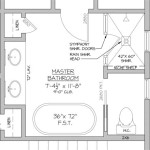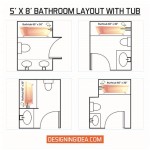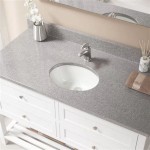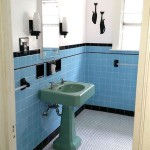Bathroom Sink Stopper Rod Came Out: Troubleshooting and Solutions
The bathroom sink stopper rod, a small but critical component of the sink's drain system, can occasionally become dislodged. This issue, while seemingly minor, can result in an inoperable drain stopper, rendering the sink less functional. Understanding the mechanics involved, common causes for detachment, and practical solutions are essential for homeowners to effectively address this problem.
The stopper rod, also known as a pivot rod or lift rod, is typically a small metal rod that connects the pop-up drain stopper to the lift rod assembly located behind the sink. The lift rod, positioned above the countertop, is the lever users manipulate to open and close the stopper. The system leverages a simple mechanical interaction: when the lift rod is raised or lowered, it pivots the stopper rod, which in turn raises or lowers the stopper, thus controlling the flow of water down the drain.
A dislodged stopper rod immediately inhibits this functionality. The stopper may become stuck in either the open or closed position, leading to inconvenience or potential water overflow situations. Before attempting any repairs, it's important to visually inspect the entire assembly to identify the specific point of failure or detachment. This allows for a targeted and efficient repair approach.
Understanding the Components of the Sink Stopper Assembly
To effectively troubleshoot a detached stopper rod, a fundamental understanding of the sink stopper assembly is crucial. This assembly comprises several key components, each playing a specific role in the opening and closing of the drain.
The primary components include the lift rod, stopper rod, clevis strap, pivot rod nut, and the drain stopper itself. The lift rod, typically positioned behind the faucet, allows the user to control the drain. The clevis strap connects the lift rod to the stopper rod. This connection is usually achieved with a series of holes and a retaining clip, allowing for adjustable positioning to fine-tune the stopper's range of motion. The stopper rod connects directly to the drain stopper inside the drainpipe. This connection often involves a ball joint or similar mechanism that allows the rod to pivot, thus raising or lowering the stopper.
The pivot rod nut secures the stopper rod to the drainpipe assembly. This nut is a critical point of potential failure, as loosening or corrosion can lead to the rod becoming detached. Finally, the drain stopper itself is the component that physically blocks the drain opening, preventing water from flowing down the drain. These stoppers often come in two variations: a pop-up stopper, which utilizes the above-mentioned mechanism, and a simple plug stopper.
Understanding how these components interact is essential for recognizing the source of the problem when the stopper rod becomes dislodged. Visual inspection of each component is a good starting point for diagnosing the malfunction.
Common Causes for Stopper Rod Detachment
Several factors can contribute to the stopper rod detaching from the drain assembly. Identifying the root cause is critical for implementing a lasting repair solution.
One of the most common reasons is a loose pivot rod nut. Over time, vibrations from water flow and general usage can cause the nut to loosen. This loosening allows the stopper rod to slip out of its designated position, disconnecting it from the stopper mechanism. Regular inspection and tightening of the pivot rod nut can help prevent this issue.
Another potential cause is corrosion. The bathroom environment is often humid, which can lead to corrosion of the metal components within the drain assembly. Corrosion can weaken the stopper rod itself, the pivot rod nut, or the connecting points, eventually causing them to break or fail. Using corrosion-resistant materials in the assembly and applying a protective coating can mitigate this issue.
Physical damage or wear and tear can also lead to detachment. Accidental impacts to the lift rod or excessive force applied to the stopper can damage the stopper rod or its connecting points. Similarly, the plastic or rubber components of the stopper assembly can degrade over time due to prolonged exposure to water and cleaning chemicals. Inspection for any signs of physical damage or wear is recommended.
Improper installation is another factor. If the stopper assembly was not correctly installed initially, the stopper rod might not be properly secured. This can lead to premature detachment, particularly under normal usage conditions. If the sink is newly installed, re-examining the installation procedures and re-installing the stopper assembly meticulously becomes important.
Finally, blockages within the drain can place undue stress on the stopper mechanism, potentially causing the rod to detach. Hair, soap scum, and other debris can accumulate in the drain, increasing the resistance when attempting to open or close the stopper. This increased resistance can strain the connecting points, ultimately leading to detachment. Regular drain cleaning can prevent this buildup and reduce the stress on the stopper assembly.
Troubleshooting and Repairing the Stopper Rod
When the stopper rod detaches, careful troubleshooting is required before attempting a repair. The repair process typically involves several steps, starting with a thorough inspection of the components and followed by re-connection of the rod and testing of the mechanism.
The initial step involves visually inspecting the entire stopper assembly. This includes examining the lift rod, clevis strap, stopper rod, pivot rod nut, and drain stopper for any signs of damage, corrosion, or looseness. Ensure there are no visible cracks, breaks, or excessive wear on any of the components. Tightening the pivot rod nut is often the first step to attempt if it appears loose.
If the pivot rod nut is loose, carefully tighten it with a wrench. Avoid over-tightening, as this can damage the threads or the nut itself. The goal is to secure the stopper rod firmly in place while allowing it to pivot smoothly. After tightening, test the lift rod to see if the stopper now operates correctly. If the issue persists, further investigation is necessary.
If the stopper rod is corroded or damaged, it may need to be replaced entirely. Replacement stopper rods are readily available at most hardware stores. Before purchasing a replacement, ensure it is compatible with the existing sink and drain assembly. This often involves checking the length and diameter of the rod, as well as the type of connection used.
When replacing the stopper rod, disconnect the old rod from the drain stopper and the clevis strap. Clean the connecting points to remove any corrosion or debris. Install the new stopper rod, ensuring it is properly aligned with the drain stopper and the clevis strap. Secure the pivot rod nut to hold the rod in place.
Reattaching the clevis strap to the lift rod may require some adjustment. The clevis strap typically has multiple holes that allow for fine-tuning the stopper's range of motion. Adjust the position of the clevis strap until the stopper opens and closes fully when the lift rod is operated. Secure the clevis strap with the retaining clip, ensuring it is firmly in place.
After reassembling the stopper assembly, thoroughly test the drain to ensure it is functioning correctly. Fill the sink with water and operate the lift rod to open and close the stopper. Check for any leaks around the pivot rod nut or the drain stopper. If any leaks are detected, carefully tighten the fittings until the leaks stop.
If the stopper is still not functioning correctly, consider removing the drain stopper and cleaning the drainpipe. As mentioned earlier, blockages can prevent the stopper from seating properly, even if the stopper rod is correctly connected. Flush the drain with hot water to remove any remaining debris.
In some cases, the drain stopper itself may be damaged or worn out. If the stopper is cracked or misshapen, it will not seal properly, even if the stopper rod is functioning correctly. Replacing the drain stopper is a relatively simple task. Purchase a new stopper that is compatible with the sink and drain assembly. Remove the old stopper and install the new one, ensuring it is properly seated in the drain opening.
If all else fails, or if the homeowner is uncomfortable performing the repairs themselves, consulting a qualified plumber is recommended. A plumber can diagnose the problem accurately and perform the necessary repairs efficiently, ensuring the sink drain is functioning correctly.

In My Sink Pop Up Stopper The Tip Of Pivot Rod Is Broken How Do I Fix It Home Improvement Stack Exchange
The Stopper In Bathroom Sink That Pulls Up And Down To Operate On A Rod Between Hot Cold Knobs No Longer Works Is Stuck Shut Where It Can T

Quick Tip 26 Pop Up Stopper Sticks Misterfix It Com

How To Fix A Sink Stopper Step By Guide

Fixing Tricky Pop Up Drain Sink Stopper Mechanisms Efficient Plumber

How To Replace Or Maintain A Sink Pop Up Drain Assembly Step By Guide Hofen

How To Replace A Sink Stopper Quick And Simple Home Repair

How To Fix A Bathtub Or Sink Pop Up Stopper

Bathroom Sink Drain Stopper Not Working

My Pop Up Drain Is Not Draining Water
Related Posts







